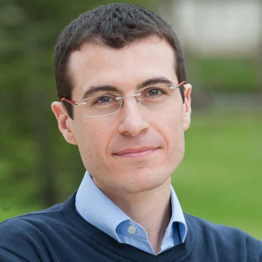Capital flows, leverage and monetary policy
When firms have a lot of debt: are capital flows beneficial, helping individuals hedge against risks to their wealth? What is the impact of demand imbalances and cost increases when credit imperfections interact with nominal rigidities? What can we conclude about monetary policy in the eurozone?
These are very relevant questions in a world caught between the capital flows and financial instability characteristic of 2000-2015 and other trends (some slowdown in globalization, resurgent inflation and higher interest rates).


Capital flows and macroeconomic policy in open economies
The objective of the first part of the project is to model how debt leverage, when contract enforcement is constrained and the capital structure of firms is inelastic, affects the financial health of firms, as well as the consequences on the labor market and asset returns. The impact of these factors on employment and wages has been studied in widely cited papers in the corporate finance literature, and we intend to incorporate it into an open macroeconomic model along the lines of Backus, Kehoe and Kydland (1994).
The immediate application of this framework seeks to find answers to the "puzzles" related to cross-country financial investment flows. Then, by introducing nominal rigidities, we want to examine the tightening of monetary policy within the Eurozone, as the pace of rate hikes affects the welfare of society depending on the connection between the financial sector and the labor market. This analysis can also provide insights into other relevant issues, such as those related to the linkages between the US and Emerging Markets.
Finally, we will use our framework to gain a deeper understanding of the relationship between capital flows and inequality. According to the empirical literature, this relationship depends on labor income versus capital income, but that channel has not been fully captured by the literature on global imbalances.

Monetary policy in closed economies
The objective of the second part of the project is to develop a macroeconomic model that can be used to analyze how financial frictions, labor market segmentation and labor heterogeneity affect business cycle dynamics.
To this end, we want to derive a Neo-Keynesian model that combines three main ingredients:
Three different types of agents (entrepreneurs, high-skilled workers and low-skilled workers).
Segmented labor markets (skilled vs. unskilled workers) where there are job search frictions
Endogenous productivity (R&D investment and intangible capital accumulation).
We plan to analyze this framework in two steps:
Study how negative supply shocks - caused, for example, by a pandemic or an increase in energy prices - affect the dynamics of unemployment, productivity and inflation.
We plan to enrich the model with a more realistic representation of financial markets based on financial intermediaries and segmented bond markets. Such a framework allows for a rigorous analysis of unconventional monetary policies and, therefore, it will be possible to conjecture about the effect of Quantitative Easing (QE) tapering when inflation is high, growth is low and fiscal space is limited.
Our team
Principal Investigator
TEAM RESEARCH
Antonio Moreno Ibañez (School of Economics)
Asier Aguilera Bravo (School of Economics)
Juan Equiza Goñi (School of Economics)
Proyecto PID2022-138725NB -I00 financiado por MCIN/ AEI /10.13039/501100011033 y por FEDER "Una manera de hacer Europa"



